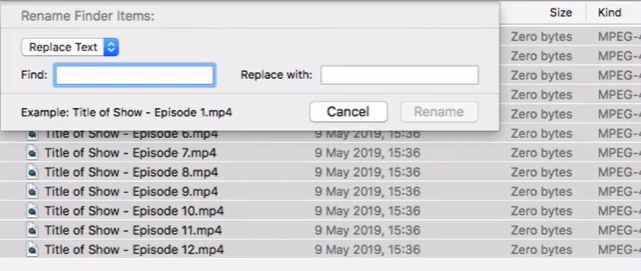

- How to delete a zero byte file with an invalid filename software#
- How to delete a zero byte file with an invalid filename code#
- How to delete a zero byte file with an invalid filename windows#
It appears that the z doesnt work because it deletes ALL the files from the directory. It works to normalize directory names of movies: for f in */ do nf=$(echo "$f" |sed -e 's//./g' -e 's/\.\.\././g' -e 's/\.\././g' -e 's/\. This doesnt run from a batch file, but runs from a command prompt (with the single ) 2.

How to delete a zero byte file with an invalid filename windows#
While you keep these keys pressed, click Cancel in the Shut Down Windows dialog box.
How to delete a zero byte file with an invalid filename code#
The code writes two arrays of bytes to the file. As for efficient, the most efficient would be. And the third filename < /dev/null tries to run filename with /dev/null as input.
How to delete a zero byte file with an invalid filename software#
If file already exists, the code will delete the existing file. n some cases, zero byte files may be used to convey information like file metadata (for example, its filename may contain an instruction to a user viewing a directory listing such as documents-have-been-moved-to-partition-D.txt, etc) or to put in a directory to ensure that it is nonempty, since some tools such as backup and revision control software may ignore the empty directories. Actually, the second form touch filename doesn't delete anything from the file - it only creates an empty file if one did not exist, or updates the last-modified date of an existing file. I use this one-liner to remove invalid characters in subtitle files: for f in *.srt do nf=$(echo "$f" |sed -e 's//./g s/\.\.\././g s/\.\././g') test "$f" != "$nf" & mv "$f" "$nf" & echo "$nf" done The following code snippet creates a file Mahesh.txt in C:Temp folder.


 0 kommentar(er)
0 kommentar(er)
